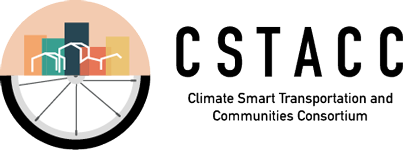Statewide Transportation Modeling Initiative (STMI)
Models are needed to analyze the impact of policy proposals on vehicle use and the need for electricity and hydrogen infrastructure. The current transportation-related models employed by three key state agencies (Caltrans, California Energy Commission, and the California Air Resources Board) are ill-suited to analyze evolving climate and equity policies. The models are not well linked and do not have the necessary rigor to support decision making about policies such as vehicle GHG performance standards, vehicle purchase incentives, infrastructure improvements like high occupancy toll lanes and California High Speed Rail, not to mention the radical changes being introduced by shared, electric, and automated vehicles. Also, these models do not have the ability to evaluate local and regional policy, including addressing equity and environmental justice issues. The California Statewide Travel Demand Model managed by Caltrans comes closest to evaluating local conditions because it is a bottom-up, activity-based system simulation that represents the travel behavior of all individuals and households.
The CSCC, led by UC Irvine, will address the twin challenges of inconsistency and insensitivity to local and regional contexts. Working with the state agencies, they will better integrate and align statewide models and improve their ability to represent the impacts of climate smart policies at different scales and contexts. STMI will focus on enhancing the primary models of transportation activity in the state to: 1) better represent variation in vehicle classes and fuel types by household, 2) produce projections of how travel behavior will be altered by the introduction of automated and shared vehicles, and 3) represent shifts to electric and other low- carbon heavy duty trucks and rail. The research team will also improve the interface between the models to facilitate the use of consistent input data, and will partner with the regional case study teams to refine the use of these models to examine local and regional impacts of statewide policies.
